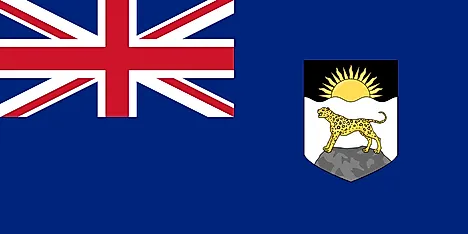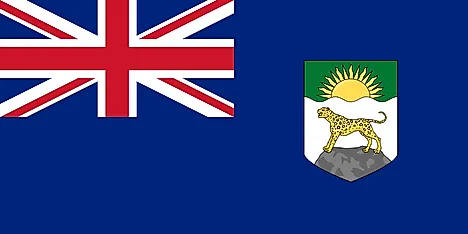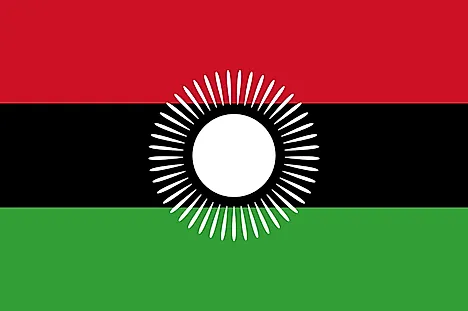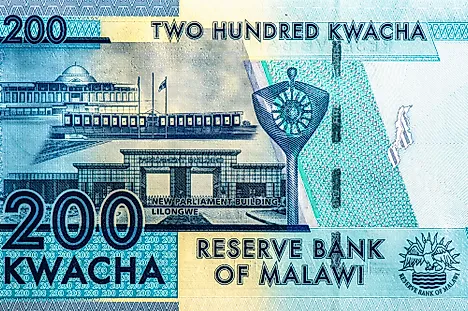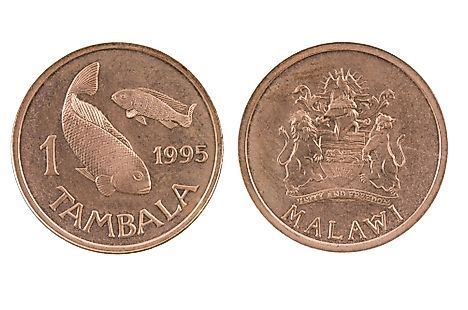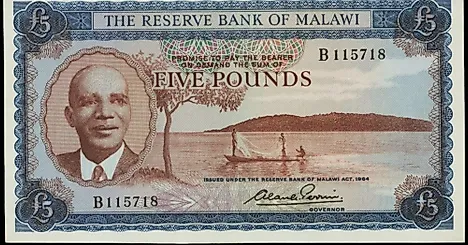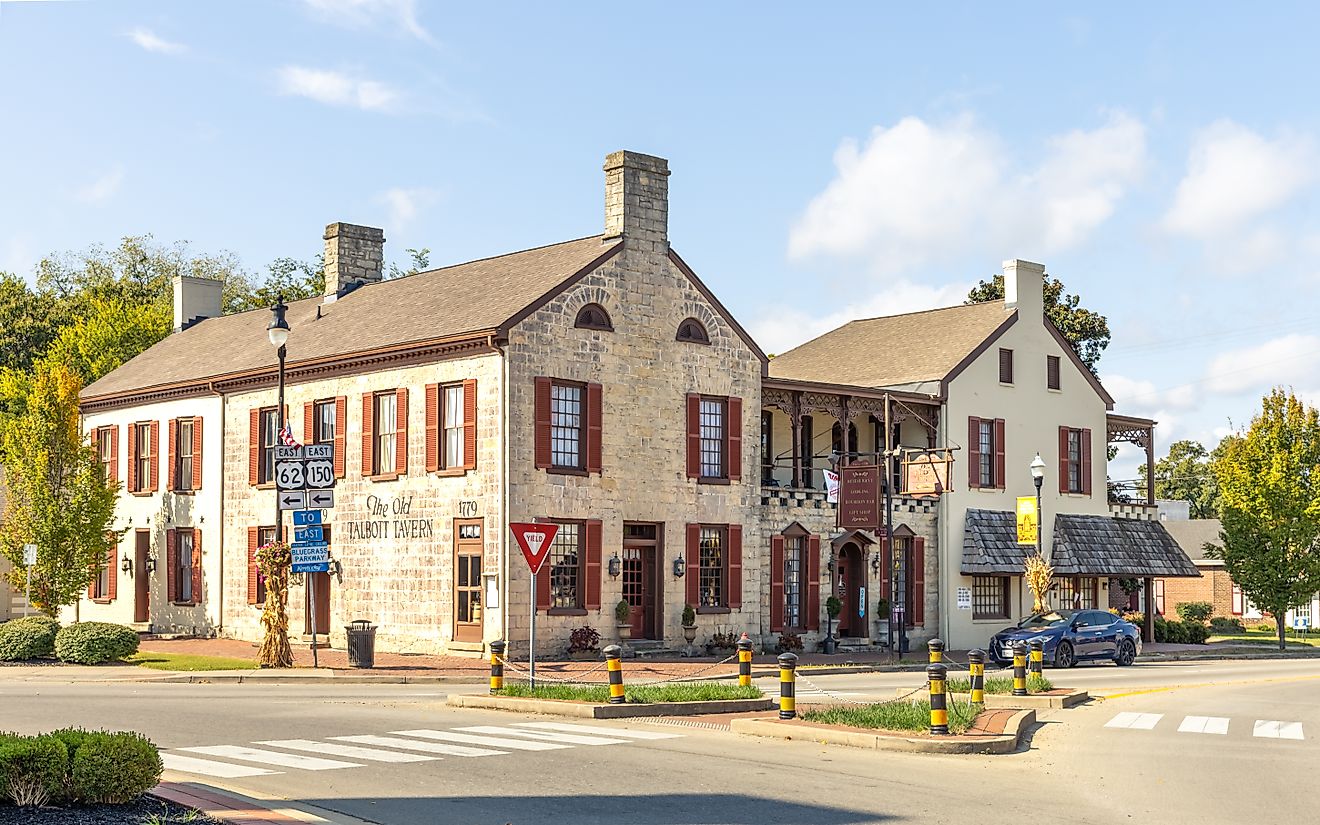Flags, Symbols, & Currencies of Malawi
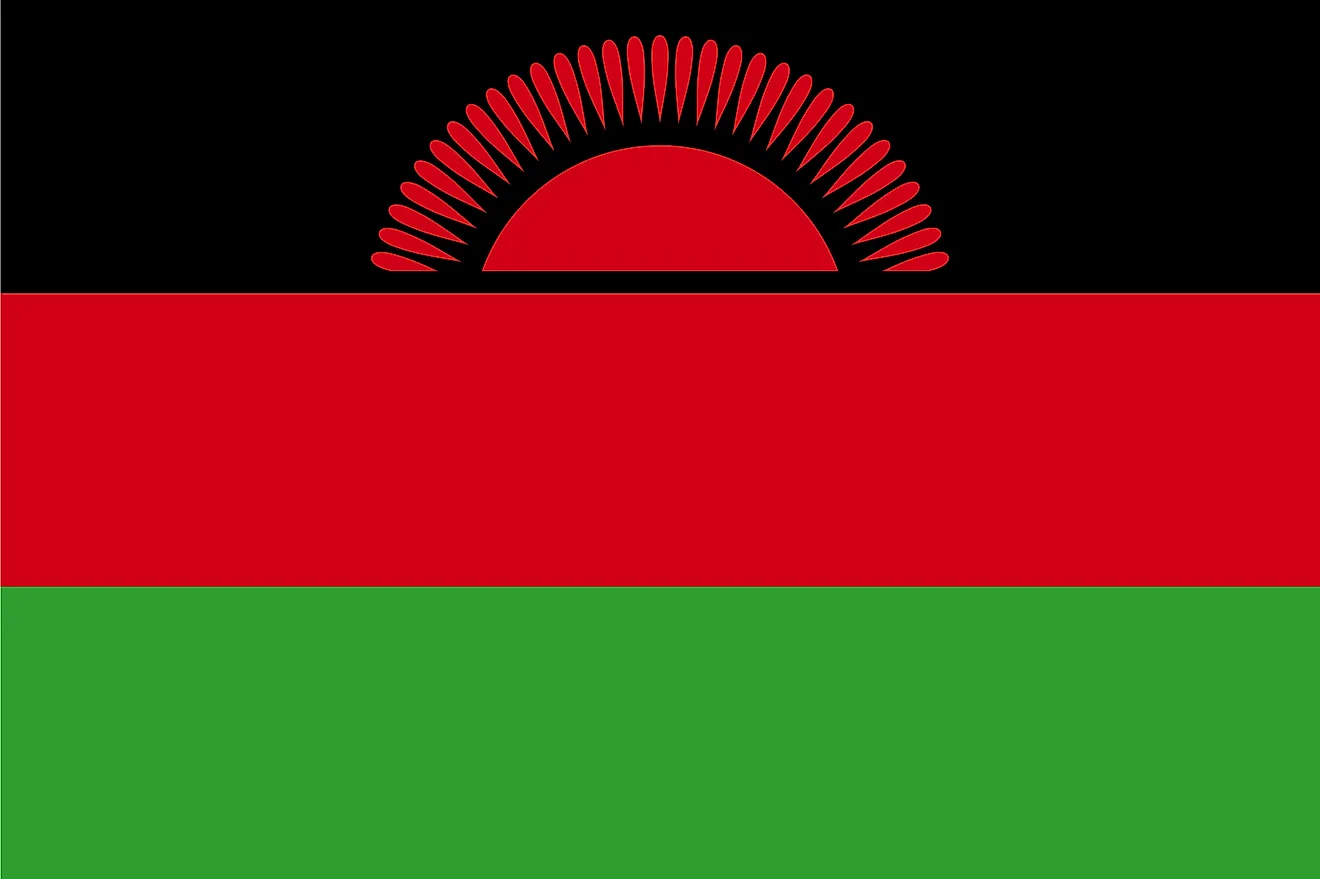
The current flag of Malawi was adopted on July 6, 1964, at independence, and served as the country's national flag until July 29, 2010, when the Democratic Progressive Party-led government adopted a new but similar flag with white sun in the middle. However, the independence flag was restored on May 28, 2012, by the new regime lead by President Joyce Banda.
The national flag of Malawi is a tricolor flag of three horizontal stripes of black, red, and green from top to bottom. The black stripe features a rising sun at the center. The sun and its rays are red in color. The flag closely resembles the Pan-African flag that was designed by Marcus Garvey. However, the black and the red bands have been arranged in a reverse manner in Malawi’s flag and the sun has been added.
The stripes were altered from the previous flag to match the original Pan-African Flag layout, with the red stripe at the top, the black stripe in middle, and the green stripe at the bottom. The rising sun at the flag's top was replaced with a full, centred white sun representing the economic progress Malawi has made since becoming independent.
Each of the colors used in Malawi’s flag has its own meaning. The black color represents Africa’s indigenous population. The red color is a symbol of the people’s struggle to achieve independence from treacherous slavery and oppressive colonial rule. Green represents nature that is one of Africa’s biggest treasure. The sun on the black stripe symbolizes the dawn of freedom and hope in the continent of Africa.
History of the Flag of Malawi
The flag currently used in Malawi was initially adopted in 1964 when the nation achieved its independence. The flag remained in use till 1910 when a new flag was adopted on July 29, 2010. This flag was proposed by the Democratic Progressive Party that had formed the government at that time. The red and the black colors of the stripes were interchanged to match the layout of the original Pan-African Flag where the red stripe is at the top and the green at the bottom. The rising red sun seen in the previous flag was replaced by a new full white sun centered on the middle black stripe. The sun represented the nation’s economic progress since freedom. The flag’s new design was, however, not widely accepted in Malawi. A large section of the population opposed the adoption and use of this new flag. Finally, the former flag was re-adopted in 1912 and is in use event today.
Symbols of Malawi
National Coat of Arms of Malawi
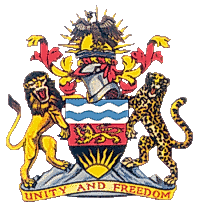
Malawi's coat of arms is composed of a shield based on the earlier Nyasaland heraldic arms, and is supported by a lion on the left and leopard on the right. The shield is divided into three parts; the lower part is black with a golden rising sun. The middle part is red with golden lion, and the top part is Water Barry wavy Azure. The country's motto: UNITY AND FREEDOM is displayed on a scroll below. The shield stands on Mount Mlanje.
National Anthem
- Anthem Title: "Mlungu dalitsani Malaŵi" ("O God bless our land of Malawi")
- Music composer and Lyricist: Michael-Fredrick Paul Sauka
- Date of Adoption: 1964
The national anthem of Malawi, "Mlungu dalitsani Malaŵi" ("O God bless our land of Malawi"), was adopted in 1964 at independence. The anthem's lyrics were composed by Michael-Fredrick Paul Sauka, who also set them to music. The anthem comprises three verses without a chorus. It calls on the Malawians to unite and overcome enemies such as hunger and diseases. The anthem also praises Malawi's natural beauty and calls on the people to serve their country selflessly.
Mlungu dalitsani Malaŵi
Mlungu dalitsani Malaŵi,
Mumsunge m'mtendere.
Gonjetsani adani onse,
Njala, nthenda, nsanje.
Lunzitsani mitima yathu,
Kuti tisaope.
Mdalitse Mtsogoleri nafe,
Ndi Mayi Malaŵi.
Malaŵi ndziko lokongola,
La chonde ndi ufulu,
Nyanja ndi mphepo ya m'mapiri,
Ndithudi tadala.
Zigwa, mapiri, nthaka, dzinthu,
N'mphatso zaulere.
Nkhalango, madambo abwino.
Ngwokoma Malaŵi.
O Ufulu tigwirizane,
Kukweza Malaŵi.
Ndi chikondi, khama, kumvera,
Timutumikire.
Pa nkhondo nkana pa mtendere,
Cholinga n'chimodzi.
Mayi, bambo, tidzipereke,
Pokweza Malaŵi.
O God bless our land of Malawi
O God bless our land of Malaŵi,
Keep it a land of peace.
Put down each and every enemy,
Hunger, disease, envy.
Join together all our hearts as one,
That we be free from fear.
Bless our leader, each and every one,
And Mother Malaŵi.
Our own Malaŵi, this land so fair,
Fertile and brave and free.
With its lakes, refreshing mountain air,
How greatly blest are we.
Hills and valleys, soil so rich and rare
Give us a bounty free.
Wood and forest, plains so broad and fair,
All - beauteous Malaŵi.
Freedom ever, let us all unite
To build up Malaŵi.
With our love, our zeal and loyalty,
Bringing our best to her.
In time of war, or in time of peace,
One purpose and one goal.
Men and women serving selflessly
In building Malaŵi.
The Currency of Malawi is the Malawian Kwacha
Both Malawi and Zambia use Kwacha as their official currency. Although adopted based on the Zambian Kwacha, the Malawi kwacha and the Zambia kwacha are two distinct currencies and cannot be used interchangeably. The word Kwacha was adopted from a Bemba word meaning “dawn” reflecting the motto of Zambian people, “New dawn of freedom.” Malawi kwacha has been the official currency of Malawi since 1971, replacing several other currencies including the Malawian Pound, South African Rand, and Rhodesian Dollar. It replaced the Malawian pound, which had been in use from independence in 1964 at a fixed rate of two kwacha for every pound. As of 2014, one British pound exchanged for 227.681 kwacha while one South African Rang exchanged for 149.8 kwacha. At the time of change of currency in 1971, the Malawian currency was already decimalized. The Malawian Kwacha is subdivided into 100 tambalas and its ISO 4217 code is MWK. It is often presented with the symbol MK. In 2012, Malawi dropped its currency peg to the US dollar leading to a significant devaluation of the kwacha by about 50%.
Coins
The first coins were introduced in 1971 when Malawi adopted the kwacha. The coins were in several denominations including 1, 2, 5, 10, and 20 tambalas. 50 tambala and one kwacha coins were added to the existing denominations of coins in 1986 while 5 and 10 kwacha coins bearing a mint date of 2001 were introduced in January 2007. In 2012, 1, 5, and 10 new kwacha coins were released into circulation. One and two tambala coins are made of copper-plated steel while one kwacha coins are made of brass-plated steel.
Banknotes
Banknotes dated 1964 were released alongside the first coins in 1971 and were in the denominations of both tambala and kwacha. In 1973, 2 kwacha notes were discontinued and in its place was the 5 kwacha note. In 1883, 20 kwacha notes were introduced into circulation. Between 1986 and 1992, 50 tambala and 1 kwacha notes were discontinued from circulation while 50, 100, 200, and 500 kwacha notes were introduced between 1993 and 2001. To ease the alarming cash shortage in the country, 2,000 notes were released into circulation. As of 2008, seven denominations of banknotes are in circulation with the denominations ranging from 20 to 2000 kwacha. The Reserve Bank of Malawi has undertaken to revise its new family of banknotes so that they can become user-friendly to the blind.
Historical Currencies of Malawi
Malawian pound was the currency that was replaced by the Malawian kwacha. From 1932, Malawi (Nyasaland) used the Southern Rhodesian pound. However, in 1955, Rhodesian and Nyasaland pound was reduced as the currency. The pound was subdivided into 20 shillings. Upon independence, Malawi in 1964, Malawi adopted the Malawian pound. The Malawian pound was minted in coins and banknotes, with the notes bearing the portrait of Kamuzu Banda. Banknotes were in denominations of 5/-, 10/-, £1, £5, while coins were in 1d, 6d, 1 shilling, 1 florin (2/-), ½ crown (2/6) denominations.
